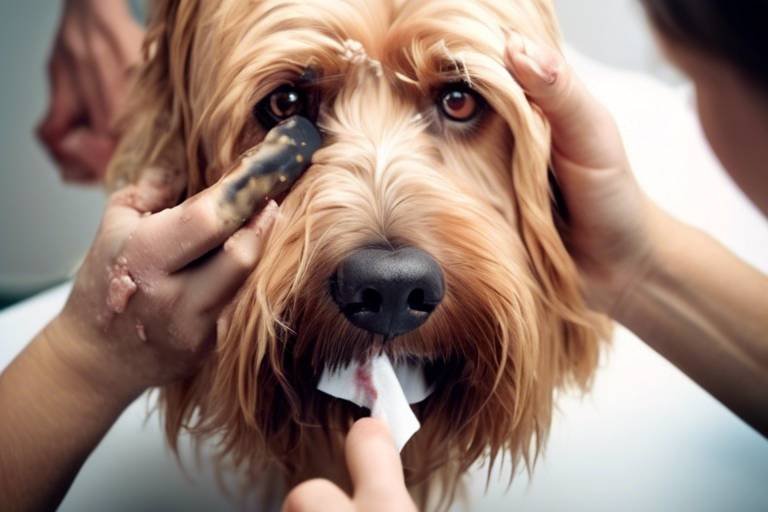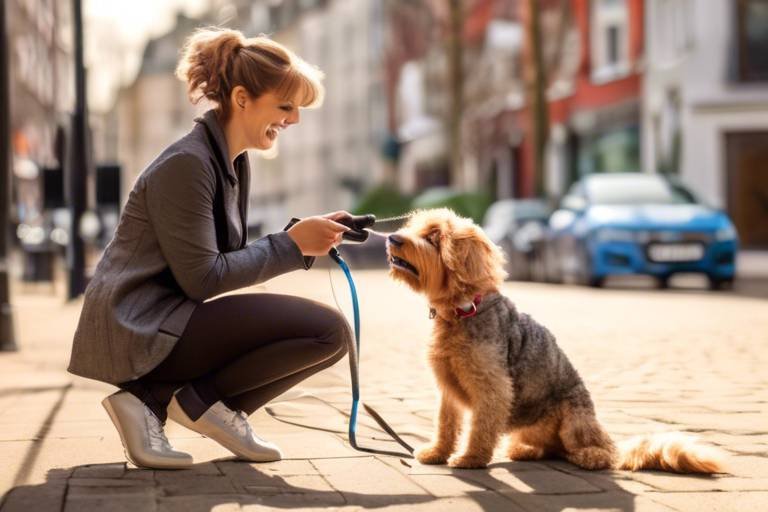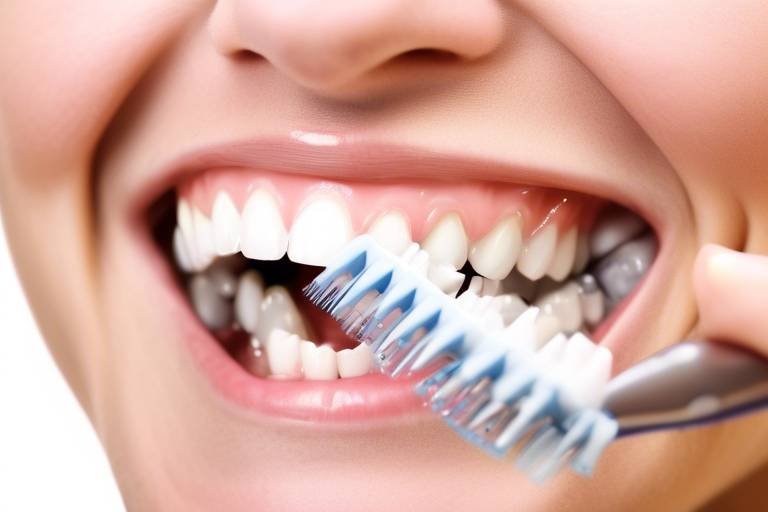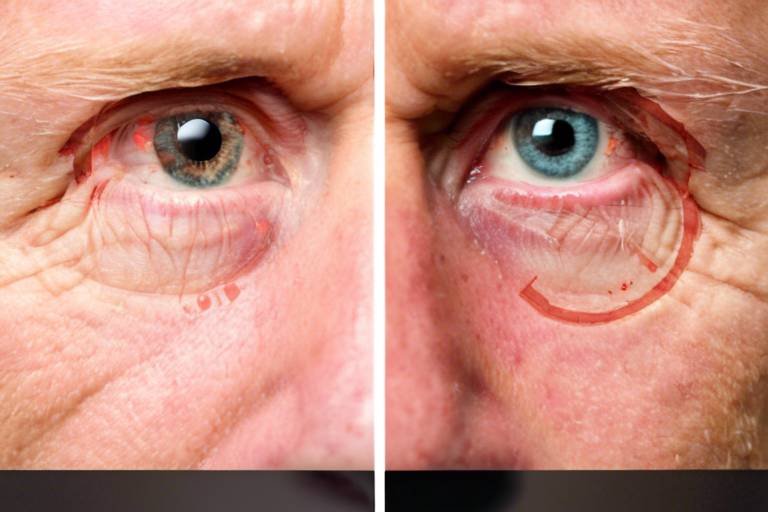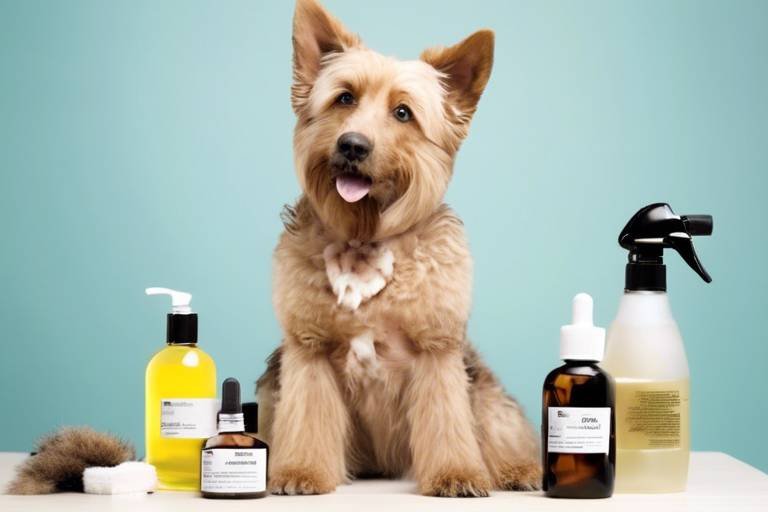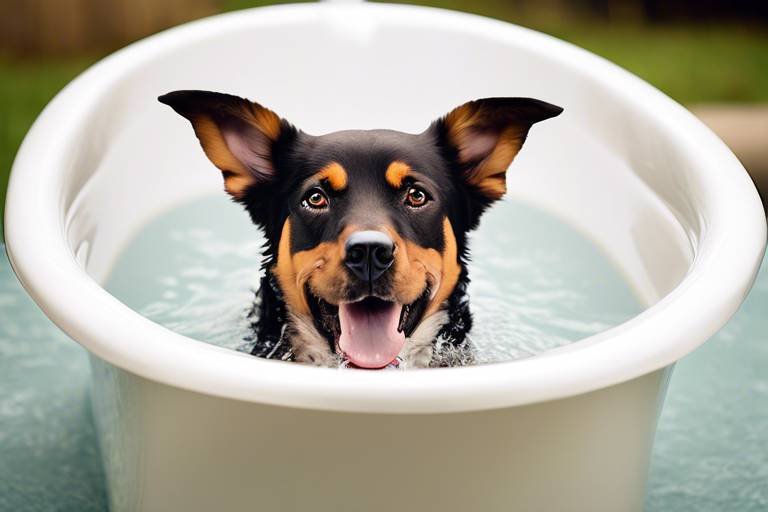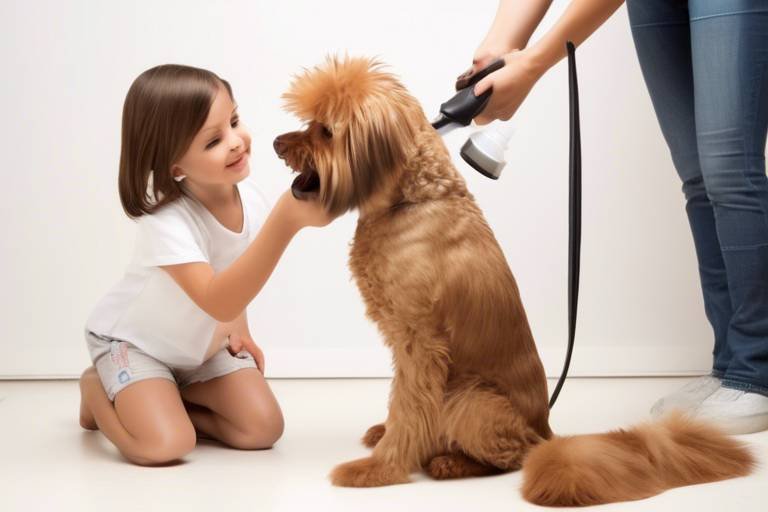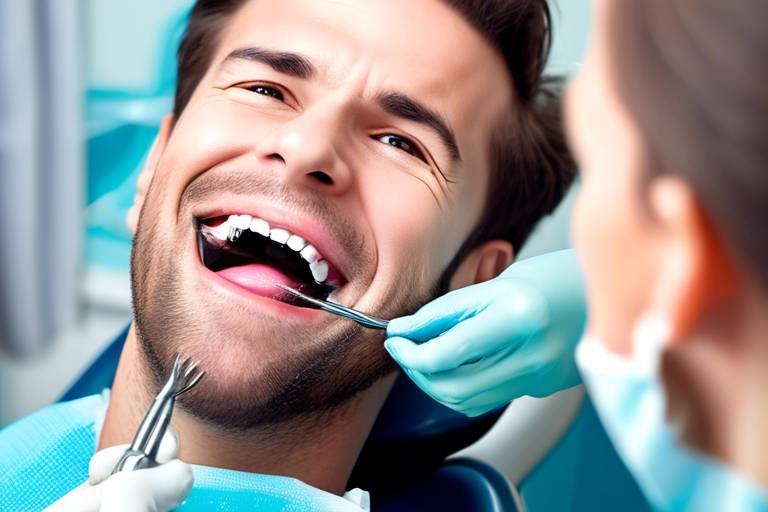How to Spot and Treat Infections During Grooming
This article provides essential insights into identifying and managing infections that can occur during grooming. Learn how to keep your pets safe and healthy while maintaining their hygiene.
When it comes to our furry friends, grooming is not just about keeping them looking sharp; it’s also about ensuring their health. Unfortunately, during grooming sessions, pets can be exposed to various types of infections. These infections can be broadly categorized into bacterial, fungal, and viral infections. Each type can have distinct effects on your pet's health, leading to discomfort or more severe health issues if left untreated. Bacterial infections, for instance, can arise from minor cuts or abrasions during grooming, while fungal infections like ringworm can spread through contact with contaminated surfaces or tools. Understanding these infections is the first step in keeping your pet safe.
Recognizing the early signs of infection is crucial. Just like us, pets can exhibit symptoms that signal something is wrong. Common signs include redness, swelling, and discharge. If you notice any of these symptoms, it’s essential to take action quickly. Ignoring these signals could lead to more serious health complications for your pet. Always remember that your pet can't speak up about their discomfort, so it's up to you to be their voice.
Skin infections are prevalent in pets and can arise from grooming. These infections can stem from various causes, including allergies, irritants, or even parasites. Identifying them early on can make a significant difference in treatment and recovery. Look for signs such as excessive scratching, biting at the skin, or unusual odors. If you notice any of these symptoms, it’s time to investigate further.
Hot spots are localized infections that can be particularly painful for pets. They often develop from constant licking or scratching of a specific area, leading to inflammation and infection. Symptoms include red, inflamed patches of skin, hair loss, and sometimes oozing. Treatment typically involves cleaning the area, applying topical medications, and, in some cases, using an Elizabethan collar to prevent further irritation. Addressing hot spots promptly can help your pet feel more comfortable and prevent the infection from worsening.
Fungal infections, such as ringworm, can also occur during grooming. These infections are often characterized by circular patches of hair loss and can be quite contagious. Prevention is key; ensure that all grooming tools are sanitized regularly. If you suspect your pet has a fungal infection, consult your veterinarian for appropriate treatment options, which may include antifungal medications and topical treatments.
Grooming can sometimes lead to ear and eye infections as well. Moisture and debris can accumulate during baths or grooming sessions, creating an environment for infections to thrive. Keep an eye out for symptoms like excessive scratching at the ears, redness, or discharge from the eyes. Regular cleaning of these areas can help prevent infections and keep your pet comfortable.
Preventing infections is always better than treating them. There are several grooming techniques and tips you can adopt to minimize the risk of infections in your pet. Regular cleaning of grooming tools and your pet's coat is vital. Make it a habit to clean brushes, clippers, and other tools after every use. This simple practice can significantly reduce the chances of spreading bacteria or fungi.
Regular cleaning of grooming tools and your pet's coat is vital. By keeping everything clean, you can help prevent infections before they even start. Use a pet-safe disinfectant to clean tools and ensure your pet’s coat is free from dirt and debris. This not only promotes better hygiene but also enhances the effectiveness of the grooming process.
Using appropriate grooming products can significantly reduce infection risks. When selecting grooming supplies, opt for high-quality, pet-safe products. Avoid those with harsh chemicals that could irritate your pet's skin. Always read labels and consult your veterinarian if you're unsure about a product’s safety.
Knowing when to consult a veterinarian is critical. If your pet exhibits severe symptoms of infection, such as persistent pain, swelling, or fever, do not hesitate to seek professional help. Early intervention can make a world of difference in your pet's recovery.
This part emphasizes the importance of seeking veterinary care when your pet exhibits severe symptoms of infection. If your pet is showing signs of distress, such as lethargy or loss of appetite, these are red flags that something is wrong. Trust your instincts—if you feel something isn't right, it's better to be safe than sorry.
Follow-up care is essential after treatment. Once your pet receives treatment for an infection, monitoring their recovery is crucial. Keep an eye on the affected areas and watch for any signs of recurrence. Schedule a follow-up appointment with your veterinarian if necessary to ensure your pet is healing properly.
Q: How can I tell if my pet has an infection?
A: Look for signs such as redness, swelling, discharge, or unusual behavior like excessive scratching or biting.
Q: What should I do if I suspect my pet has an infection?
A: Consult your veterinarian as soon as possible for an accurate diagnosis and appropriate treatment.
Q: Are there specific grooming products I should avoid?
A: Yes, avoid products with harsh chemicals and always choose pet-safe options to prevent skin irritation.

Understanding Common Infections
When it comes to grooming our beloved pets, the last thing we want is for them to suffer from infections. Unfortunately, infections can occur during grooming, and understanding the common types is essential for every pet owner. Bacterial, fungal, and viral infections are the primary culprits that can affect your pet's health, and recognizing them early can make all the difference in treatment and recovery.
Bacterial infections are among the most common issues pets face during grooming. These infections can arise from small cuts or abrasions on the skin, often unnoticed during the grooming process. For instance, if your pet has a minor scratch, bacteria can enter through the broken skin and lead to an infection. Symptoms may include redness, swelling, and pus formation, which can be distressing for your furry friend.
Fungal infections, such as ringworm, are another concern. Despite its name, ringworm is not a worm but a fungal infection that can be transmitted through direct contact with infected animals or contaminated surfaces. Grooming can inadvertently spread these fungi, especially if grooming tools are not sanitized properly. The symptoms of fungal infections often include circular patches of hair loss and itching, which can be uncomfortable for your pet.
Viral infections are less common but can still occur. Viruses can be contracted through various means, including contact with infected animals or contaminated environments. For example, canine parvovirus can lead to severe gastrointestinal issues, while canine distemper virus affects multiple body systems. These infections can be particularly dangerous, requiring immediate veterinary attention.
To summarize, here’s a quick overview of common infections that can occur during grooming:
| Type of Infection | Causes | Symptoms |
|---|---|---|
| Bacterial | Minor cuts or abrasions | Redness, swelling, pus |
| Fungal | Direct contact, contaminated tools | Hair loss, itching |
| Viral | Contact with infected animals | Varies by virus, often severe |
Understanding these infections is crucial for maintaining your pet’s health. By keeping an eye out for the symptoms and acting quickly, you can help your furry friend stay safe and healthy during grooming sessions. Remember, prevention is always better than cure, so let's dive into how we can avoid these infections altogether!

Signs of Infection to Watch For
When it comes to our beloved pets, being proactive about their health is crucial. Just like us, pets can experience infections, and recognizing the early signs can make all the difference in their recovery. So, what should you be looking for? Let’s dive into some common symptoms that indicate your furry friend might need a trip to the vet.
First off, redness is a key indicator. If you notice any areas of your pet’s skin that appear unusually red or inflamed, it could be a sign of an infection brewing beneath the surface. This redness is often accompanied by swelling, which can be a telltale sign that something isn’t right. Swelling can occur in various parts of the body, from the paws to the abdomen, and it’s important to keep an eye on these changes.
Another symptom to watch for is discharge. Whether it’s from the ears, eyes, or skin, any unusual discharge can indicate an infection. For example, if your pet has a runny nose or watery eyes, it could be a sign of a respiratory infection. In the case of skin infections, a yellow or green discharge can signal a bacterial infection that needs immediate attention.
Additionally, licking or scratching at a specific area can be a red flag. If your pet is obsessively grooming one spot, it might be their way of signaling discomfort or irritation. This behavior can lead to further issues, such as hot spots, which we’ll explore later. It’s essential to intervene before they cause more harm to themselves.
Here’s a quick summary of the signs of infection to keep in mind:
- Redness: Look for inflamed areas on the skin.
- Swelling: Notice any unusual bumps or bloated areas.
- Discharge: Pay attention to any fluid coming from the ears, eyes, or skin.
- Licking or Scratching: Excessive grooming can indicate discomfort.
Lastly, don’t overlook changes in your pet’s behavior. If they seem more lethargic than usual or are hiding away, it’s a sign that something might be off. Pets are masters at hiding their discomfort, so any significant change in their usual demeanor should prompt you to investigate further.
In summary, being vigilant about these signs can help you catch infections early and ensure your pet receives the necessary care. By staying observant and responsive to these symptoms, you can help your furry companion lead a healthier, happier life.
Q: How can I tell if my pet has an infection?
A: Look for signs such as redness, swelling, discharge, excessive licking, or changes in behavior. If you notice any of these symptoms, it's best to consult your veterinarian.
Q: Can I treat infections at home?
A: While some minor issues can be managed at home, it's crucial to seek veterinary advice for any suspected infections to avoid complications.
Q: How can I prevent infections during grooming?
A: Regular cleaning of grooming tools, using appropriate products, and keeping your pet's coat clean can significantly reduce the risk of infections.
Skin Infections
Skin infections are a common concern for pets, especially during grooming sessions. These infections can stem from various sources, including bacteria, fungi, and even parasites. It's essential to recognize the signs early, as untreated skin infections can lead to severe discomfort for your furry friend. Imagine your pet, usually full of energy, suddenly becoming lethargic and irritable due to an infection that could have been prevented or treated promptly. Understanding the causes and symptoms can help you keep your pet healthy and happy.
One of the most prevalent skin infections in pets is pyoderma, which is a bacterial infection that often occurs when the skin is damaged or irritated. This condition can develop from minor cuts or abrasions that become infected. Symptoms to watch for include redness, swelling, and the presence of pus-filled bumps. If you notice your pet excessively licking or scratching a particular area, it may be a sign of an underlying infection. Early detection is crucial, so don't hesitate to consult your veterinarian if you observe these symptoms.
Another common skin infection is ringworm, a fungal infection that can be easily transmitted between pets and even to humans. Despite its name, ringworm is not caused by a worm but rather a fungus that can create circular patches of hair loss, often accompanied by redness and scaling. If your pet is diagnosed with ringworm, it's vital to isolate them from other animals and people to prevent spreading the infection. Treatment typically involves antifungal medications and thorough cleaning of the environment to eliminate spores.
To further illustrate the types of skin infections, here’s a quick comparison:
| Type of Infection | Causes | Symptoms | Treatment |
|---|---|---|---|
| Pyoderma | Bacterial infection from skin damage | Redness, swelling, pus-filled bumps | Antibiotics, topical treatments |
| Ringworm | Fungal infection | Circular patches of hair loss, redness, scaling | Antifungal medications, environmental cleaning |
In addition to these infections, hot spots can also develop during grooming. These are localized areas of infection that can be incredibly painful for pets. Hot spots typically arise from excessive licking, scratching, or biting at the skin, often triggered by allergies, insect bites, or moisture. The affected area may appear red and inflamed, and it can quickly worsen if not treated. If you notice a hot spot, it’s essential to keep your pet from aggravating it and seek veterinary advice for appropriate treatment options.
Overall, being proactive about your pet's grooming routine and health can significantly reduce the risk of skin infections. Regularly check your pet's skin for any unusual signs, and maintain a clean grooming environment. Remember, just like us, our pets can suffer from skin issues that require attention and care. By staying vigilant, you can help ensure that your furry companion remains comfortable and infection-free!
- What should I do if I suspect my pet has a skin infection? Consult your veterinarian as soon as possible for an accurate diagnosis and treatment plan.
- Can skin infections spread to other pets or humans? Yes, some infections like ringworm are contagious, so it's crucial to isolate affected pets.
- How can I prevent skin infections during grooming? Regularly clean grooming tools, choose the right products, and keep an eye on your pet's skin condition.
Hot Spots
Hot spots, also known as acute moist dermatitis, are localized infections that can cause significant discomfort for your pet. These painful areas often develop rapidly, usually as a result of excessive licking, scratching, or biting at the skin. Imagine a small, itchy irritation that your pet just can't leave alone; this constant attention can lead to an inflamed, infected area that can become quite serious if not addressed quickly.
Typically, hot spots are characterized by their redness, swelling, and the presence of pus or crusty scabs. You might notice your furry friend constantly pawing at a specific spot, or perhaps they seem unusually restless. It's essential to catch these signs early, as hot spots can worsen rapidly, leading to more extensive skin damage and even systemic infections if left untreated.
So, what causes these pesky hot spots? They can stem from a variety of sources, including:
- Allergies (food or environmental)
- Fleas or other parasites
- Moisture trapped in the fur
- Skin irritations from grooming products
When it comes to treatment, the first step is to keep your pet from aggravating the area further. This might mean using a cone collar to prevent licking or scratching. After that, it's crucial to clean the affected area gently with a mild antiseptic solution and keep it dry. In some cases, your veterinarian may prescribe topical or oral medications to help reduce inflammation and fight infection.
Prevention is always the best strategy! Regular grooming, maintaining a clean and dry coat, and addressing any underlying allergies or skin conditions can significantly reduce the chances of hot spots developing. Remember, a little vigilance goes a long way in keeping your pet comfortable and healthy.
Q: How can I tell if my pet has a hot spot?
A: Look for signs of excessive scratching or licking, along with red, inflamed patches of skin that may ooze or smell bad.
Q: Are hot spots contagious?
A: No, hot spots are not contagious. They are usually a result of skin irritation or infection.
Q: Can I treat hot spots at home?
A: While minor hot spots can sometimes be managed at home with cleaning and topical treatments, it's best to consult a veterinarian for severe cases.
Fungal Infections
Fungal infections, such as ringworm, can be a sneaky issue that arises during grooming. These infections are caused by fungi that thrive in warm, moist environments, making your pet's coat an ideal breeding ground if not properly maintained. It's like leaving a piece of bread out on the counter; eventually, it will attract mold. Similarly, if your pet's fur is not kept clean and dry, fungi can flourish, leading to uncomfortable and sometimes painful conditions.
One of the biggest challenges with fungal infections is that they can be quite contagious, not just to other pets but also to humans! This means that if your furry friend is infected, the whole household could be at risk. Symptoms to watch for include itchiness, red patches on the skin, and hair loss in the affected areas. If you notice any of these signs, it's crucial to act quickly. Early detection can make all the difference in treatment success.
When it comes to treatment, there are several options available. Your veterinarian may prescribe antifungal medications, which can come in various forms such as topical creams, shampoos, or oral medications. It's essential to follow the prescribed treatment plan closely. Just like a stubborn stain, fungal infections require persistence and patience to eliminate completely.
Prevention is always better than cure, especially with fungal infections. Here are some effective strategies to keep your pet safe:
- Regular Baths: Keeping your pet clean can help prevent fungal growth. Use antifungal shampoos as recommended by your vet.
- Drying Thoroughly: After bathing, ensure your pet is completely dry, especially in areas that tend to retain moisture.
- Clean Environment: Regularly clean your pet's bedding and grooming tools to reduce the risk of fungal spores lingering around.
In summary, while fungal infections can be a nuisance, being proactive in grooming and hygiene can significantly reduce the risk. If you suspect your pet has a fungal infection, don’t hesitate to consult your veterinarian for the best course of action.
Q: How can I tell if my pet has a fungal infection?
A: Look for signs such as itching, redness, hair loss, or scaly patches on the skin. If you notice these symptoms, consult your veterinarian.
Q: Are fungal infections contagious?
A: Yes, fungal infections can be contagious to other pets and even humans, so it's essential to take precautions if you suspect an infection.
Q: What treatments are available for fungal infections?
A: Treatment options include topical antifungal creams, medicated shampoos, and oral medications prescribed by your veterinarian.
Q: How can I prevent fungal infections in my pet?
A: Regular grooming, bathing with antifungal products, and maintaining a clean and dry environment are key preventive measures.
Ear and Eye Infections
Grooming your pet is essential for their overall health and hygiene, but it can sometimes lead to unwanted complications, such as . These infections can be painful and uncomfortable for your furry friend, and recognizing them early is crucial for effective treatment. Just like how we might get a sore throat or itchy eyes when we’re feeling under the weather, pets can show similar signs when their ears or eyes are infected. So, how do we know when it's time to take action?
Ear infections often stem from moisture trapped in the ear canal, which can happen during a bath or after a swim. If your pet starts shaking their head excessively, scratching at their ears, or showing signs of discomfort, these could be red flags. You might even notice a foul odor coming from their ears or see a discharge that’s anything but normal. Just picture it like having a persistent itch that you can't scratch—frustrating, right?
On the other hand, eye infections can manifest in various ways. If your pet's eyes appear red, swollen, or produce a discharge, it's time to pay close attention. They might squint or even avoid bright lights, indicating that something isn't quite right. Think of it as if you had something stuck in your eye; you'd want to get it checked out immediately, wouldn’t you?
Here are some common signs of ear and eye infections to keep an eye out for:
- Ear Infections: Head shaking, scratching at ears, foul odor, discharge, swelling.
- Eye Infections: Redness, discharge, squinting, swelling, sensitivity to light.
Prevention is always better than cure, so maintaining proper grooming practices can significantly reduce the risk of these infections. Always ensure that your pet's ears are dry after bathing and consider using a gentle ear cleaner recommended by your vet. For eye care, regular cleaning with a damp cloth can help remove any irritants and keep their eyes clear.
If you notice any of these symptoms, it’s essential to consult your veterinarian promptly. They can provide a proper diagnosis and recommend effective treatments, which may include medications or specialized cleaning solutions. Remember, just like we need a little help when we’re feeling sick, our pets do too!
In conclusion, keeping an eye on your pet's ears and eyes during grooming can save you from a lot of trouble down the road. By being vigilant and proactive, you can help ensure that your furry companion remains happy and healthy.
Here are some common questions pet owners have regarding ear and eye infections:
- How can I prevent ear infections in my pet? Regularly clean your pet's ears and keep them dry after baths or swimming.
- What should I do if I notice a discharge from my pet's eyes? Consult your veterinarian for a proper diagnosis and treatment.
- Can ear infections lead to serious health issues? Yes, if left untreated, they can lead to more severe problems, including hearing loss.
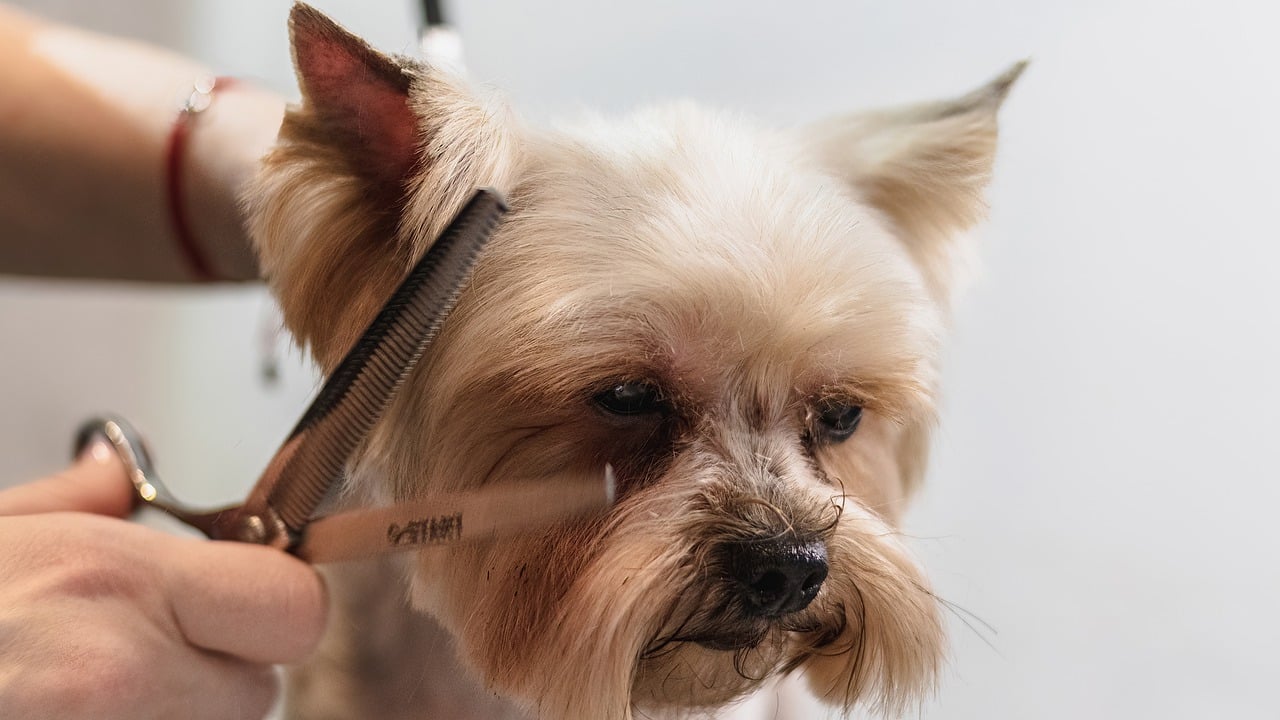
Preventative Grooming Techniques
When it comes to keeping your furry friends safe and healthy, play a vital role. Just like we brush our teeth to avoid cavities, regular grooming helps prevent infections that can arise from poor hygiene. Imagine a world where your pet is free from the discomfort of infections—sounds great, right? Well, with a few simple practices, you can make that a reality.
First and foremost, regular cleaning of grooming tools is essential. Think about it: if you use dirty brushes or clippers, you're essentially transferring bacteria and dirt onto your pet's coat. To avoid this, make it a habit to clean your tools after each use. You can use warm, soapy water or disinfectant wipes to ensure everything is spotless. It’s just like washing your hands before eating—keeping things clean is the first line of defense!
In addition to keeping your tools clean, choosing the right products is equally important. Not all shampoos and conditioners are created equal! Look for products that are specifically formulated for your pet's skin type. For example, if you have a dog with sensitive skin, opt for hypoallergenic shampoos. This not only helps in maintaining their coat but also minimizes the risk of skin irritations and infections. Always read the labels and consult your vet if you’re unsure about what’s best for your pet.
Another crucial aspect of preventative grooming is regular inspections of your pet’s skin and coat. While grooming, take a moment to check for any unusual signs such as bumps, redness, or excessive scratching. Early detection can make a world of difference! If you notice anything out of the ordinary, don't hesitate to consult your veterinarian. Remember, it's always better to be safe than sorry.
To help you remember these techniques, here’s a quick summary:
| Technique | Description |
|---|---|
| Regular Cleaning | Clean grooming tools after each use to prevent transferring dirt and bacteria. |
| Choosing the Right Products | Select grooming products that suit your pet’s specific skin type to avoid irritations. |
| Regular Inspections | Check your pet's skin and coat for unusual signs during grooming to catch issues early. |
Lastly, don't forget about hydration! Keeping your pet well-hydrated aids in maintaining healthy skin. Make sure your pet has access to fresh water at all times, especially during grooming sessions. A well-hydrated pet is less likely to develop dry skin and related infections.
By implementing these preventative grooming techniques, you not only enhance your pet's hygiene but also strengthen the bond you share with them. Grooming can be a fun and rewarding experience for both you and your pet—think of it as a spa day! With a little effort and attention, you can ensure that your beloved companion stays healthy and happy.
- How often should I groom my pet? It depends on the breed and coat type, but generally, regular grooming every 4-6 weeks is recommended.
- What are the signs of a skin infection? Look for redness, swelling, discharge, and excessive scratching or licking.
- Can I use human grooming products on my pet? It’s best to avoid human products as they can irritate your pet’s skin; always choose pet-specific products.
- When should I seek veterinary help? If you notice severe symptoms such as persistent pain, swelling, or if the infection worsens, consult your vet immediately.
Regular Cleaning
When it comes to keeping your furry friends healthy and happy, is a non-negotiable part of the grooming process. Just like we brush our teeth and wash our hands, our pets need a routine that helps prevent infections and maintain their overall hygiene. Imagine your pet’s coat as a beautiful garden; without regular tending, it can quickly become overrun with weeds and pests. In this case, those 'weeds' can be bacteria and fungi that lead to infections.
To start, make sure you have a dedicated grooming area that is clean and organized. This space should have all your grooming tools at hand, including brushes, clippers, and shampoos. It’s essential to clean these tools regularly to remove any hair, dirt, or bacteria that may linger after each grooming session. A quick rinse with hot water and a mild disinfectant can go a long way. You don’t want to transfer any unwanted germs from one grooming session to another, do you?
Next, let’s talk about your pet’s coat. Regular brushing is not just about aesthetics; it helps distribute natural oils and removes dead hair and skin. This practice not only keeps your pet looking sharp but also minimizes the chances of skin infections by preventing matting, which can trap moisture and bacteria. Aim for a brushing schedule that suits your pet’s coat type; longer-haired breeds may need daily brushing, while short-haired ones can manage with a weekly routine.
Additionally, bathing your pet is crucial, but it should be done with care. Over-bathing can strip the skin of its natural oils, leading to dryness and irritation. Instead, find a balance. Use a gentle, pet-safe shampoo, and consider the following tips:
- Choose a shampoo that suits your pet’s skin type.
- Rinse thoroughly to avoid any residue that could cause irritation.
- Dry your pet completely after a bath to prevent dampness, which can lead to fungal infections.
Finally, don’t forget about your pet’s ears and eyes! Regularly check and clean these areas to prevent infections. For ears, use a vet-recommended cleaner on a cotton ball, and for eyes, you can use a damp cloth to wipe away any discharge. Keeping these areas clean is like checking your garden for pests; catching issues early can save you a lot of trouble down the road.
In summary, regular cleaning is not just a chore; it’s a crucial step in preventing infections and ensuring your pet remains healthy and vibrant. By incorporating these practices into your grooming routine, you’re not just maintaining your pet’s appearance but also safeguarding their health.
Q1: How often should I groom my pet?
A1: The frequency of grooming depends on your pet's breed and coat type. Long-haired breeds may require daily grooming, while short-haired ones can be groomed weekly.
Q2: What are the signs that my pet needs a bath?
A2: If your pet starts to smell, has oily fur, or shows signs of itching, it may be time for a bath. However, be cautious not to over-bathe.
Q3: Can I use human shampoo on my pet?
A3: It's best to avoid using human shampoo as it can disrupt your pet's skin pH. Always opt for shampoos specifically formulated for pets.
Q4: How can I tell if my pet has a skin infection?
A4: Look for signs like redness, swelling, or unusual discharge. If you notice any of these symptoms, consult your veterinarian promptly.
Choosing the Right Products
When it comes to grooming your pet, selecting the right products can make all the difference in preventing infections and maintaining their overall health. Think of it as choosing the best tools for a job; just as a skilled craftsman wouldn’t use a dull saw, you shouldn’t use subpar grooming supplies on your furry friend. The right products not only help keep your pet looking fabulous but also ensure their skin and coat remain healthy.
First and foremost, always look for pet-specific grooming products. Human shampoos and conditioners may contain ingredients that can irritate your pet’s skin or disrupt their natural pH balance. Instead, opt for products formulated specifically for pets. These products are designed to be gentle while effectively cleaning and moisturizing your pet's coat. For instance, if your pet has sensitive skin, consider hypoallergenic shampoos that are free from harsh chemicals and fragrances.
Furthermore, consider the ingredients in the grooming products you choose. Natural and organic ingredients are often safer and better for your pet. Look for products that include soothing elements like aloe vera, oatmeal, or chamomile. These ingredients can help calm irritated skin and provide additional moisture. On the other hand, avoid products with sulfates, parabens, or artificial dyes, as these can be harsh and potentially cause allergic reactions.
Additionally, it’s crucial to select the right grooming tools. For example, using a quality brush can prevent matting and reduce the risk of skin infections. Different breeds require different types of brushes—short-haired dogs may only need a rubber curry brush, while long-haired breeds benefit from a slicker brush. Always ensure that the tools are clean and well-maintained to avoid introducing bacteria during grooming sessions.
Lastly, consider your pet's unique needs. For example, if your pet has a history of skin issues or allergies, consult with your veterinarian for product recommendations tailored to their specific conditions. They may suggest medicated shampoos or topical treatments that can help manage ongoing issues. Remember, just like we have our preferences and sensitivities, pets do too!
By paying attention to the products you use and choosing wisely, you can significantly reduce the risk of infections and keep your pet healthy and happy. It's all about creating a positive grooming experience that enhances your pet's well-being.
- What should I look for in pet grooming products? Look for pet-specific, hypoallergenic products with natural ingredients that suit your pet's skin type.
- Can I use human shampoo on my pet? No, human shampoos can disrupt your pet's skin pH and may cause irritation.
- How often should I groom my pet? It depends on the breed. Long-haired pets may need grooming several times a week, while short-haired pets may need it less frequently.
- What are the signs of an allergic reaction to grooming products? Look for symptoms like redness, itching, or excessive scratching, and consult your veterinarian if you notice these signs.
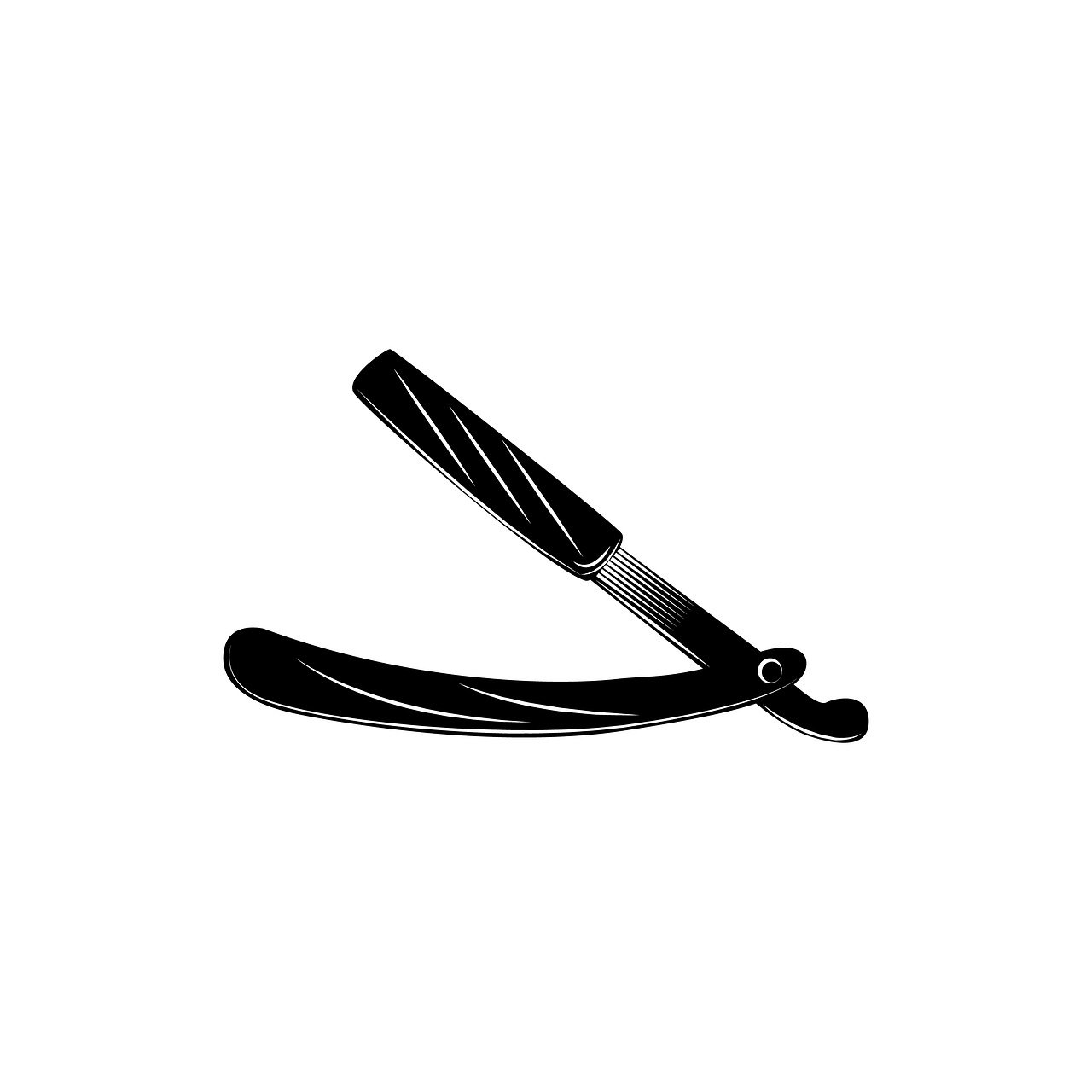
When to Seek Veterinary Help
As a pet owner, you want to ensure your furry friend is always happy and healthy. However, sometimes infections can sneak up on you, especially after grooming sessions. Knowing when to seek veterinary help is crucial for your pet's well-being. If you notice any signs of infection, it’s essential to act swiftly. But what exactly should you be looking for? Let's break it down.
First and foremost, severe symptoms should never be ignored. If your pet is experiencing persistent pain, unusual swelling, or if the infection seems to worsen despite home care, it’s time to consult your veterinarian. Think of it like this: just as you wouldn't ignore a fever or a wound that won't heal in yourself, your pet deserves the same level of attention. Early intervention can make a significant difference.
Some specific indicators that warrant a trip to the vet include:
- Excessive Redness or Swelling: If you notice that a particular area of your pet's skin is extremely red or swollen, it may be a sign of a serious infection.
- Foul Odor: An unpleasant smell emanating from your pet's ears, skin, or mouth can indicate an infection that requires professional treatment.
- Discharge: Any unusual discharge from wounds, ears, or eyes should be assessed by a veterinarian.
- Behavioral Changes: If your pet is suddenly lethargic, refuses to eat, or shows signs of distress, these may be signs of an underlying infection.
Another important aspect is follow-up care. After your pet receives treatment for an infection, monitoring their recovery is vital. If symptoms persist or new ones develop, don’t hesitate to return to the vet. Regular check-ups can help ensure your pet is on the right path to recovery. Just like a follow-up appointment after surgery for humans, your pet might need similar care to ensure everything is healing as it should.
In conclusion, being vigilant and informed can make all the difference in your pet's health. If you notice any concerning signs or symptoms, don't wait—reach out to your veterinarian. Remember, your pet relies on you to be their advocate, so don’t hesitate to seek help when needed.
Q: How can I tell if my pet has an infection?
A: Look for signs such as redness, swelling, discharge, and behavioral changes. If you notice any of these, consult your veterinarian.
Q: What should I do if my pet has a hot spot?
A: Clean the area gently and keep it dry. If it doesn’t improve or worsens, seek veterinary help.
Q: Are there any preventive measures I can take?
A: Yes! Regular grooming, cleaning grooming tools, and using appropriate products can help prevent infections.
Q: How often should I take my pet to the vet?
A: Regular check-ups every 6-12 months are recommended, but more frequent visits may be necessary for older pets or those with health issues.
Severe Symptoms
This article provides essential insights into identifying and managing infections that can occur during grooming. Learn how to keep your pets safe and healthy while maintaining their hygiene.
This section explores the most common types of infections pets may experience during grooming, including bacterial, fungal, and viral infections, and how they can affect your pet's health.
Recognizing the early signs of infection is crucial. This section highlights symptoms such as redness, swelling, and discharge that indicate your pet may need medical attention.
Skin infections are prevalent in pets and can arise from grooming. This subsection discusses common skin infections, their causes, and how to identify them early.
Hot spots are localized infections that can be painful for pets. This section explains how they develop, their symptoms, and effective treatment options.
Fungal infections, like ringworm, can also occur during grooming. This part covers prevention, symptoms, and treatment methods for these infections.
Grooming can sometimes lead to ear and eye infections. This subsection outlines how to spot these infections and the best practices for treatment.
Preventing infections is always better than treating them. This section offers grooming techniques and tips to minimize the risk of infections in your pet.
Regular cleaning of grooming tools and your pet's coat is vital. This subsection discusses how to maintain cleanliness to prevent infections.
Using appropriate grooming products can significantly reduce infection risks. This section provides guidance on selecting safe and effective grooming supplies for your pet.
Knowing when to consult a veterinarian is critical. This section outlines situations where professional help is necessary for treating infections effectively.
When it comes to your furry friend, noticing severe symptoms of infection is crucial for timely intervention. If your pet exhibits any of the following signs, it's essential to seek veterinary care immediately:
- Persistent Pain: If your pet is vocalizing more than usual or showing signs of discomfort when touched, it could indicate a severe infection.
- Swelling: Unexplained swelling in any area, especially around wounds or grooming sites, should raise a red flag.
- Fever: A noticeable increase in body temperature can signal that your pet is fighting off an infection.
- Excessive Discharge: Whether it’s from the ears, eyes, or skin, any unusual discharge can be a sign of an underlying issue.
- Loss of Appetite: If your pet suddenly refuses to eat or drink, it may be due to pain or illness.
It’s important to remember that these symptoms can escalate quickly. For example, a small cut might seem minor, but if it becomes infected, it can lead to serious complications. Just like how a tiny crack in a dam can eventually lead to a flood, ignoring the signs of infection can result in severe health issues for your pet.
In such cases, your veterinarian may recommend diagnostic tests, such as blood work or imaging, to determine the exact cause of the symptoms. Early detection can make all the difference in your pet's recovery. Just as you wouldn't ignore a persistent cough in yourself, don’t overlook these signs in your furry companion.
Follow-up care is essential after treatment. This section discusses how to monitor your pet's recovery and when to return for a check-up.
Q: How can I tell if my pet's grooming products are causing irritation?
A: Look for signs like redness, itching, or excessive scratching after grooming. If you notice these symptoms, consider switching to hypoallergenic products.
Q: What should I do if I find a hot spot on my pet?
A: Clean the area gently with warm water and a mild antiseptic. If the hot spot looks severe or doesn't improve, consult your veterinarian.
Q: Can I treat minor infections at home?
A: While some minor irritations can be treated at home, it's always best to consult with a veterinarian for proper diagnosis and treatment recommendations.
Follow-Up Care
After your pet has received treatment for an infection, is essential to ensure a smooth recovery. Just like humans, pets require ongoing attention to heal properly. You might wonder, what does follow-up care entail? Well, it often includes monitoring your pet's condition, administering any prescribed medications, and ensuring that their environment is conducive to healing. It's like nurturing a plant back to health; you need to provide the right conditions for it to thrive again.
One of the first things to keep in mind is the importance of monitoring symptoms. After treatment, watch for any signs that the infection might not be clearing up as expected. This could include persistent redness, swelling, or discharge. If you notice any of these symptoms, it’s crucial to contact your veterinarian promptly. They may need to adjust the treatment plan or investigate further. Remember, early intervention can make a significant difference!
Additionally, administering medications as directed by your vet is vital. This could include antibiotics for bacterial infections or antifungal medications for fungal infections. Make sure to follow the prescribed dosage and schedule. Missing doses can lead to incomplete treatment and may allow the infection to return. Think of it as a race; every dose is a step toward the finish line, and skipping steps can set you back.
Another aspect of follow-up care is environmental management. Ensure that your pet's living space is clean and comfortable. Regularly wash bedding and toys, and keep their grooming tools sanitized. This helps prevent any new infections from developing. If your pet has had a skin infection, consider limiting their access to areas where they might come into contact with irritants or allergens, much like keeping a wound covered to avoid further injury.
Finally, don’t forget about the importance of regular veterinary check-ups. Your vet will likely want to see your pet again after a certain period to assess their recovery. These visits are crucial for evaluating whether the infection has fully resolved and for monitoring any potential side effects from medications. Keeping this appointment is like getting a progress report; it helps ensure that your pet is on the right track.
- How long should I monitor my pet after treatment? It's advisable to keep an eye on your pet for at least a week after treatment, or as directed by your veterinarian.
- What should I do if symptoms return? Contact your veterinarian immediately if you notice any returning symptoms, as they may need to reassess your pet's condition.
- Are there specific signs that indicate the infection is worsening? Yes, signs such as increased redness, swelling, pus, or your pet showing signs of pain should prompt a vet visit.
- Can I continue regular grooming during recovery? It depends on the type of infection. Always consult your vet for specific advice tailored to your pet's situation.
Frequently Asked Questions
- What are the most common types of infections pets can get during grooming?
Pets can experience various infections during grooming, including bacterial, fungal, and viral infections. Each type can affect your pet differently, so it's important to recognize the signs and symptoms associated with each to ensure their health and well-being.
- How can I tell if my pet has an infection?
Look for signs like redness, swelling, or discharge around the affected area. Other symptoms may include excessive scratching, licking, or changes in behavior. If you notice any of these signs, it's best to consult a veterinarian for a proper diagnosis.
- What are hot spots, and how do I treat them?
Hot spots are localized infections that can be quite painful for pets. They often appear as red, inflamed patches on the skin. Treatment typically involves cleaning the area, applying topical medications, and preventing your pet from licking or scratching the spot until it heals.
- Can grooming tools cause infections?
Yes, if grooming tools are not properly cleaned and sanitized, they can harbor bacteria and fungi, leading to infections. Regularly cleaning your grooming tools is crucial in preventing these issues.
- What should I do if I suspect my pet has a fungal infection?
If you suspect a fungal infection, such as ringworm, it's important to consult your veterinarian. They can perform tests to confirm the infection and recommend appropriate treatments, which may include antifungal medications and topical treatments.
- When should I seek veterinary help for my pet?
You should seek veterinary help if your pet exhibits severe symptoms, such as persistent pain, swelling, or if the infection does not improve with initial home care. Early intervention can prevent complications and ensure a quicker recovery.
- How can I prevent infections during grooming?
Prevent infections by practicing good hygiene. This includes regularly cleaning grooming tools, using safe grooming products, and ensuring your pet's coat is well-maintained. Regular check-ups with your vet can also help catch any potential issues early.
- What follow-up care is necessary after treating an infection?
After treatment, monitor your pet for any signs of recurring symptoms. Follow your veterinarian's instructions for any prescribed medications and schedule a follow-up visit if needed to ensure your pet is recovering well.

